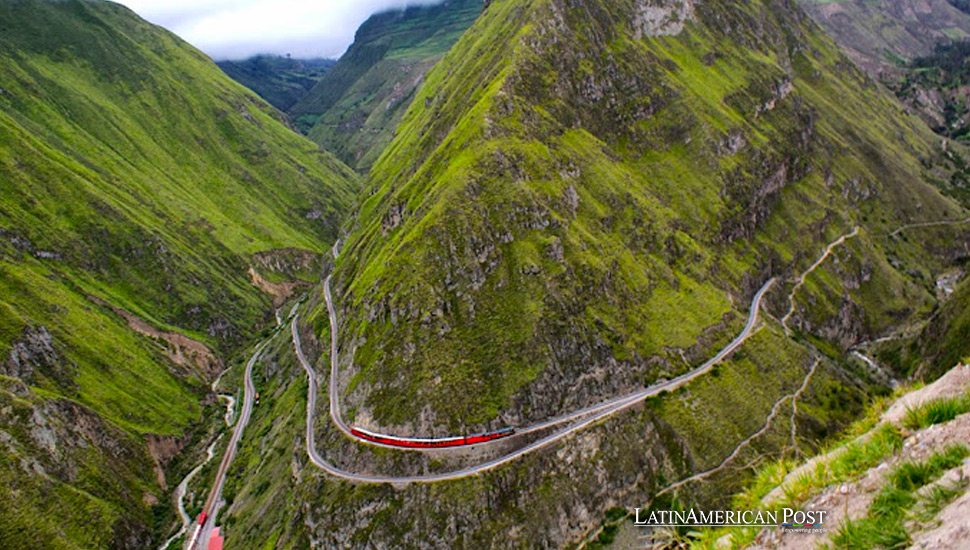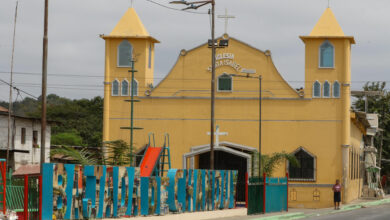Resurrecting Ecuador’s Dangerous Historic Railway

In the heart of Ecuador, the Nariz del Diablo railway, once celebrated as the world’s most arduous train route, beckons a revival. This narrative delves into its storied past, present struggles, and the community’s aspirations, portraying a journey of resilience and hope through the Andean highlands.
Nestled within the rugged terrains of the Ecuadorian Andes lies the Nariz del Diablo (Devil’s Nose), a railway marvel that epitomizes human perseverance against nature’s daunting obstacles. Constructed in the late 19th and early 20th centuries, this rail line is more than a feat of engineering; it is a chronicle of cultural heritage, economic evolution, and a testament to the indomitable spirit of the Ecuadorian people. Today, as the tracks lay silent, the inhabitants of Alausí, a quaint city cradled in the Andean folds, are spearheading a movement to breathe life back into the rails, seeking to rekindle the flames of tourism and economic prosperity.
The journey of the Nariz del Diablo railway began under the ambitious governance of Gabriel García Moreno and was brought to fruition by Eloy Alfaro. Its construction spanned almost half a century, marked by political upheavals and technological advancements. The railway’s path, carved through the mountainous spine of Ecuador, was an odyssey of human toil and triumph. The construction saw the loss of over 2,000 lives, primarily Jamaican laborers, who battled the relentless Andean elements – from treacherous cliffs to unpredictable weather, showcasing the grim yet valiant narrative of this monumental endeavor.
Cultural Tapestry and Economic Lifeline
For Alausí and its surrounding regions, the Nariz del Diablo was more than a transportation route; it was an economic artery pumping life into remote communities and a bridge connecting diverse cultural landscapes. At its zenith, the train attracted thousands of visitors annually, eager to experience the awe-inspiring journey through the Andes. The railway became a symbol of national pride and a canvas reflecting Ecuador’s rich tapestry of history, nature, and culture.
However, the turn of the 21st century marked a decline for the railway. Operational challenges and shifting political priorities led to its eventual cessation. The impact on Alausí was palpable, with the town witnessing a significant downturn in tourist footfall and economic activity. Once buoyed by the train’s visitors, the local populace found themselves grappling with a void, prompting a collective yearning for revival.
In recent years, efforts to resurrect the Nariz del Diablo have gained momentum, with community leaders, local authorities, and international advocates championing the cause. The railway’s potential as a cultural and tourist magnet is undeniable, with stakeholders envisioning a future where the train not only reclaims its former glory but also catalyzes sustainable development and heritage preservation.
Community, Migration, and Hope
The narrative of the Nariz del Diablo is deeply intertwined with stories of migration and community resilience. Many residents, faced with economic hardships, have sought fortunes abroad, leaving behind a community determined to restore its financial foundation. The railway revival is seen as a beacon of hope, promising to reverse migration trends and reinvigorate the local economy. Community members, like Miriam Choglio from the parish of Pistishí, embody this hope, envisioning a future where returning migrants and thriving tourism synergize to create a prosperous local economy.
Despite the optimism, the path to the railway’s revival is strewn with challenges. Issues of funding, infrastructure maintenance, and bureaucratic hurdles loom large, necessitating a concerted effort from all stakeholders. The potential for the Nariz del Diablo to act as a linchpin for regional tourism and economic development is immense. However, realizing this vision requires strategic planning, investment, and a shared commitment to the railway’s legacy and future potential.
Echoes in the Andean Landscape
The story of the Nariz del Diablo railway is emblematic of broader themes resonating across the Andean region. It speaks to the struggles and aspirations of Latin American communities confronting the dual forces of modernization and cultural preservation. With its blend of historical grandeur and contemporary relevance, the railway’s narrative offers insights into the complex tapestry of Latin American development, heritage, and identity.
Also read: Ecuador’s Flower Industry Blooms Amidst Challenges
As the campaign to revive the Nariz del Diablo gathers pace, it stands as a testament to the enduring spirit of Alausí and the broader Andean community. The railway’s tracks, winding through the majestic Andes, are not merely conduits of travel but corridors of memory, heritage, and hope, charting a course toward a future where history and progress coalesce to redefine the landscape of Ecuadorian and Latin American destiny.





